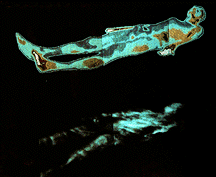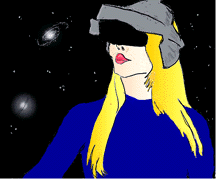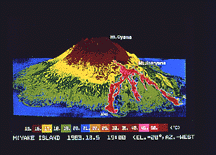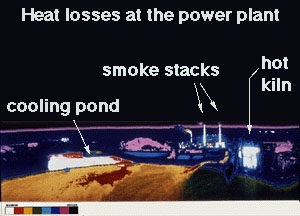Exploratour - Life in the Solar System
Click on image for full size
NASA
Like other icy moons, Europa is small, with no atmosphere to speak of, with direct exposure to space and the charged particle environment of Jupiter's magnetosphere. With no atmosphere there is no buffer between the surface and space itself, therefore the surface of Europa extremely cold.
Nevertheless, the interior of Europa may have been warm enough at one time to contain a liquid layer just under the surface. On Earth, we know that there are some creatures which can survive in an environment of very cold water, such as under the ice of the north pole.
This means that, if the conditions are just right, there may be living creatures on Europa under the icy surface! Read more about this possibility be taking the Exploratour Does Euorpa have an Ocean? Read more about our attempts to explore Europa for life by taking the Exploratour: NASA's Exploration for life, found at the bottom of this page.
This is page 15 of 20












